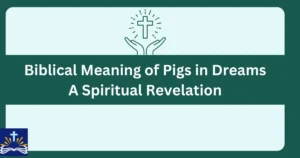El Gallo: More Than Just a Rooster A Symbol of Strength, Tradition, and Culture
From the break of dawn to the heart of folklore, El Gallo stands as a powerful symbol across Latin America and beyond. But this iconic rooster is more than just a bird it carries a deep cultural, historical, and spiritual significance that has endured for generations.
Whether it’s seen as a symbol of courage, pride, or renewal, El Gallo has made its mark in mythology, celebrations, religion, and even modern pop culture. But what exactly makes this rooster such an enduring figure?
In this article, we’ll uncover the rich symbolism of El Gallo, from its historical roots to its modern-day significance in 2024 and beyond. Get ready to explore the legends, traditions, and hidden meanings behind this fascinating bird one that continues to captivate hearts and inspire minds across the world.
Let’s dive into the story of El Gallo and discover why its legacy still shines brightly today!
Literal Meaning of “El Gallo”
The literal meaning of “El Gallo” in Spanish is “The Rooster.”
- “El” = “The”
- “Gallo” = “Rooster”
What Does “El Gallo” Mean?
In a basic sense, it refers to the male chicken known for its loud crowing at dawn. However, beyond its literal meaning, El Gallo holds deep cultural, historical, and symbolic significance, especially in Latin American traditions, folklore, and spirituality.
In Spanish, “gallo” refers to a rooster or male chicken, but its meaning extends far beyond a simple farm bird. Known for its powerful crow at dawn, the gallo symbolizes the arrival of a new day, resilience, and discipline. For centuries, especially in rural communities, roosters have been guardians of time, waking people with their call and representing vigilance, strength, and unwavering spirit. More than just an animal, El Gallo stands as a timeless symbol of courage and renewal, deeply rooted in tradition, folklore, and cultural identity.
Phonetic Breakdown:
The Spanish term “El Gallo” is pronounced as “El GAH-yo” in most Spanish-speaking regions. Phonetically, “El” sounds like “ell” in “bell”, while “Gallo” is typically pronounced as “GAH-yo”, where the “ll” takes a soft “Y” sound, similar to “yes” in English. However, pronunciation can vary by region. In Spain, the “ll” retains a clear “Y” sound, while in Argentina and Uruguay, it often shifts to a “zh” or “sh” sound, making it “GAH-zho” or “GAH-sho”. Despite these regional differences, the word remains a strong cultural symbol across Spanish-speaking communities.
The deeper meaning of el gallo in english
The deeper meaning of El Gallo goes beyond its identity as a rooster; it represents strength, courage, leadership, and renewal in various cultural and spiritual traditions. In Latin American folklore, El Gallo is often seen as a protector and a symbol of resilience, standing tall even in the face of challenges.
In religious contexts, it serves as a reminder of faith, vigilance, and redemption, particularly in Christianity, where it is linked to Peter’s denial and spiritual awakening. The rooster’s morning crow symbolizes new beginnings, hope, and the triumph of light over darkness. Additionally, in music, literature, and celebrations, El Gallo embodies pride, honor, and perseverance, making it a powerful emblem across generations and cultures.
Symbolism and Cultural Significance of El Gallo

El Gallo holds a deep cultural significance in many traditions, especially in Latin America and Spain, where it is associated with values such as bravery, confidence, and renewal. It has been a central figure in folklore, proverbs, religious beliefs, and daily life for generations. Often linked to leadership and determination, El Gallo is seen as a representation of resilience and vigilance, as it welcomes each new day with its crow.
In various communities, it plays a role in festivals, storytelling, music, and historical narratives, emphasizing its lasting presence in cultural heritage. Whether as a symbol of personal strength or a sign of new beginnings, El Gallo continues to be a meaningful part of different traditions around the world.
Cultural Significance of El Gallo

El Gallo holds an important place in Latin American, Spanish, and global traditions, representing values that have been passed down for generations. It is deeply connected to history, storytelling, and daily life in many cultures.
- Represents bravery and confidence, often linked to individuals with a fearless attitude.
- Connected to leadership and dominance, associated with taking charge in different aspects of life.
- Tied to morning and renewal, as its crow signals a fresh start every day.
- Recognized in religious and spiritual beliefs, appearing in different cultural traditions.
- Featured in festivals, literature, and music, influencing creative expressions across various regions.
El Gallo in Folklore and Proverbs

Throughout history, El Gallo has been a key figure in stories, sayings, and cultural wisdom, offering lessons that continue to inspire people today.
- Frequently appears in traditional tales, representing wisdom and determination.
- Included in well-known proverbs, often used to describe human traits and behavior.
- Used as a teaching tool, helping to instill values such as resilience and awareness.
- Found in poetry and songs, especially in Latin American storytelling traditions.
- Holds historical meaning, as past leaders and figures have been compared to El Gallo for their strong character.
El Gallo and New Beginnings

El Gallo is often associated with fresh starts and positive change, making it an important figure in cultural beliefs and personal growth.
- Marks the start of a new day, signaling a fresh opportunity every morning.
- Encourages persistence and resilience, inspiring people to push through challenges.
- Commonly referenced in motivation and self-improvement, symbolizing personal growth.
- Has deep roots in agricultural life, where it plays a practical role in daily routines.
- Represents progress and transformation, reminding people to embrace new experiences.
Pop Culture for El Gallo
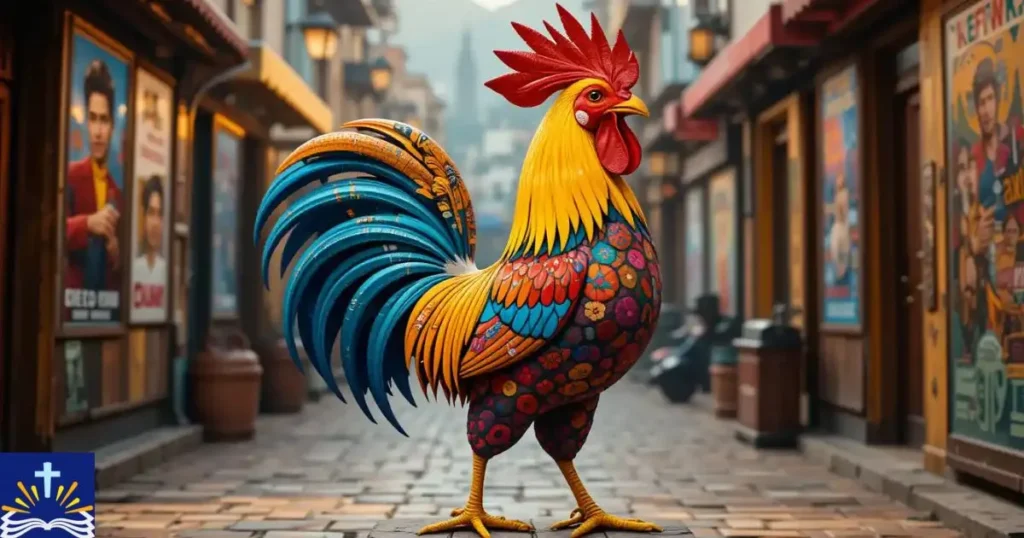
El Gallo has made a lasting impact on music, literature, and cinema, becoming a recognizable figure in cultural storytelling. Its presence in Latin music, famous lyrics, and films reflects its deep connection to themes of bravery, honor, and resilience. Whether in traditional ballads, legendary books, or classic films, El Gallo continues to inspire and captivate audiences.
Music and Songs: The Rooster in Latin Music
El Gallo has been a popular theme in Latin American music, symbolizing strength, confidence, and a fighting spirit. Many songs highlight its bold nature, often using it as a metaphor for overcoming struggles. From rancheras to corridos, the rooster appears in folk traditions and modern hits, reinforcing its role as an emblem of power and perseverance.
Famous Lyrics from “El Gallo de Oro”
One of the most well-known musical references to El Gallo is in “El Gallo de Oro”, a song that celebrates determination and pride. The lyrics often depict a fearless rooster that never backs down, reflecting the spirit of resilience and honor. These themes resonate with listeners who see the rooster as a symbol of personal strength and cultural pride.
El Gallo in Literature and Cinema
Beyond music, El Gallo has been a significant figure in literature and film, often used to portray characters with courage and leadership. In books, it is a metaphor for struggle and success, appearing in stories, poetry, and folklore.
In cinema, it has been featured in classic films and modern adaptations, representing honor, survival, and the challenges of life. Many directors and writers use the image of El Gallo to tell powerful and inspiring stories, keeping its legacy alive in popular culture.
El Gallo in Mexican Cuisine

El Gallo is not only a cultural and symbolic figure but also plays a role in Mexican cuisine, where rooster-based dishes have been part of traditional cooking for generations. Roosters are known for their rich flavor and firm texture, making them ideal for slow-cooked stews and sauces. Whether in festive meals or home-cooked recipes, El Gallo remains an important element in Mexico’s culinary heritage.
Rooster Dishes in Mexico
“In Mexico, cooks often use rooster meat in hearty stews and traditional dishes, bringing a deep and distinct flavor.” Some popular rooster dishes include:
- Gallo en Mole – A slow-cooked rooster dish covered in a rich and flavorful mole sauce.
- Caldo de Gallo – A traditional rooster soup made with vegetables and spices.
- Guisado de Gallo – A spiced rooster stew, simmered to perfection.
- Rooster Tamales – Special tamales made using seasoned rooster meat.
- Gallo Asado – Grilled rooster, marinated in local herbs and spices.
Gallo en Mole Recipe (Simplified)
This classic Mexican dish features rooster slow-cooked in mole sauce, a thick and flavorful blend of chili peppers, chocolate, nuts, and spices.
- Marinate rooster meat with salt, pepper, and citrus juice for tenderness.
- Prepare mole sauce by blending dried chilies, roasted tomatoes, garlic, nuts, and chocolate.
- Slow-cook the rooster in broth until tender, then mix it with the mole sauce.
- Simmer for extra flavor, allowing the sauce to coat the meat fully.
- Serve with rice and tortillas, garnished with sesame seeds.
Festivals and Rooster Feasts
In Mexican festivals, roosters are often a centerpiece of feasts and celebrations.”People serve dishes featuring rooster meat during special occasions, family gatherings, and traditional holidays as part of communal meals.” Some festivals also feature rituals, songs, and dances that honor the rooster’s cultural importance, blending food and tradition in a meaningful way.
Bop Meaning for Girls Slang, Trends, and Cultural Impact
El Gallo in Mexican Wrestling (Lucha Libre)
El Gallo is a powerful figure in Lucha Libre, Mexico’s famous form of wrestling, where fighters adopt strong and fearless personas. The rooster represents bravery, determination, and a fighting spirit, making it a popular mascot and nickname among wrestlers.
Mascot and Symbol of Fighters
Many Lucha Libre wrestlers use El Gallo as a symbol of strength and resilience. It represents fighters who never back down, much like a rooster in a battle for dominance. The image of a fearless rooster inspires wrestlers to take on bold and aggressive fighting styles, making it a well-respected icon in the sport.
Iconography in Lucha Libre
“Wrestlers showcase ‘El Gallo’s’ influence through masks, costumes, and stage names, adopting bold and colorful designs inspired by roosters.”. Wrestlers with the Gallo persona often embody fearlessness, agility, and confidence, using their rooster-themed identity to create a strong connection with fans.
El Gallo as a Metaphor
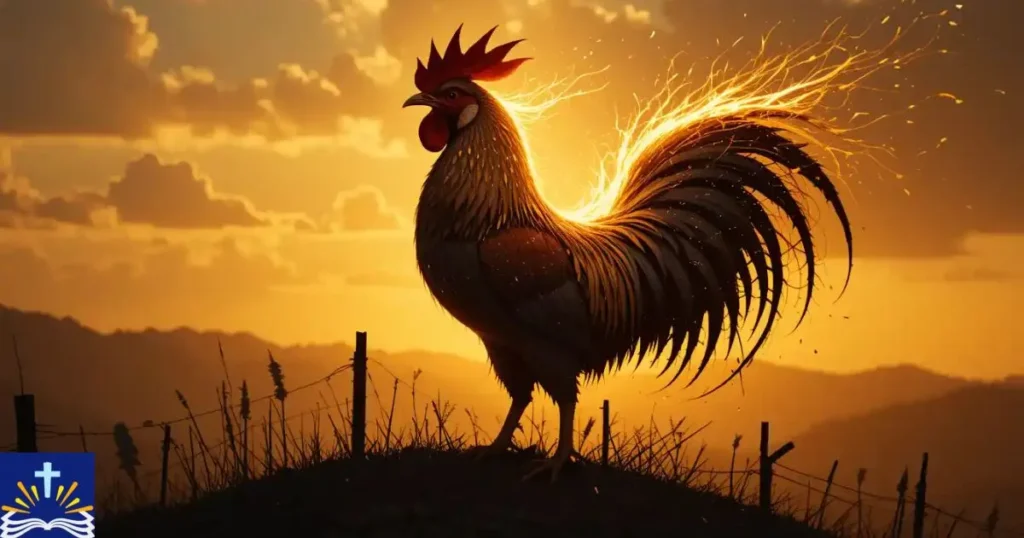
“People widely use ‘El Gallo’ as a metaphor for strength, leadership, and determination in language, literature, and everyday conversations.”
The Rooster as a Fighter
“Many cultures compare a strong and dominant person to a rooster in a fight. This metaphor commonly describes individuals who are confident, fearless, and ready to defend their beliefs. The idea of ‘standing tall like a rooster’ symbolizes leadership, pride, and resilience.”
Popular Phrases and Idioms Involving El Gallo
Many Spanish idioms and expressions use El Gallo to describe personality traits and life situations. Some common phrases include:
- “Ser un gallo” – To be strong, dominant, or courageous.
- “Cantar como un gallo” – To speak with confidence or authority.
- “No hay gallo que cante dos veces” – A way of saying that opportunities don’t always come twice.
- “El gallo más fuerte en el corral” – Referring to someone who is the leader or strongest in a group.
- “Cuando canta el gallo, el día comienza” – Symbolizing new beginnings or fresh starts.
El Gallo in Religion and Spirituality
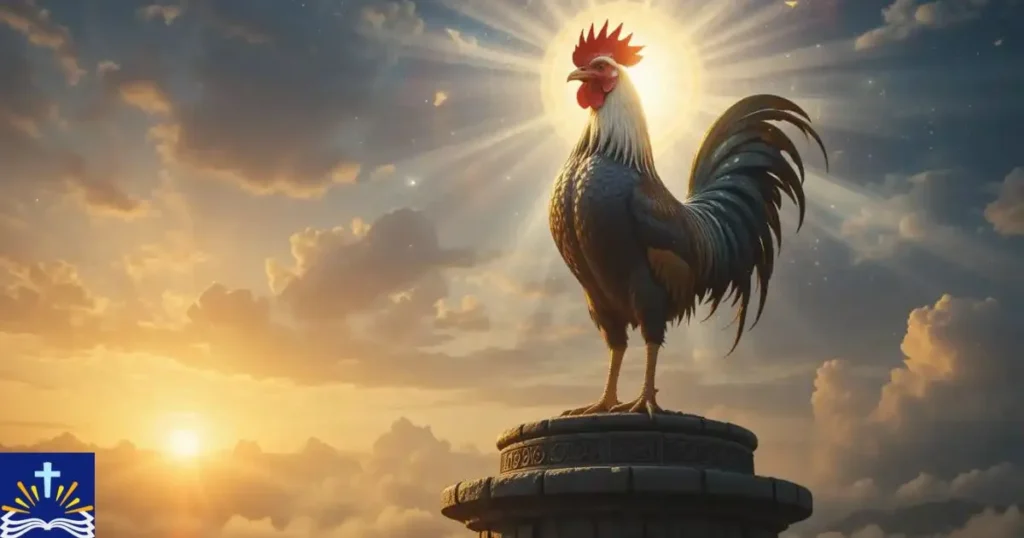
It is often seen as a symbol of faith, vigilance, and resurrection, making it an important figure in spiritual narratives.
The Rooster in Catholic Iconography
In Catholicism, the rooster is closely associated with the story of Peter’s denial of Jesus Christ. According to the Bible (Luke 22:61), Jesus foretold that Peter would deny him three times before the rooster crowed. This moment is symbolic of human weakness, repentance, and redemption, making the rooster a reminder of faith and forgiveness in Christian teachings.
Many Catholic churches feature rooster symbols in their artwork, weather vanes, and religious texts. The rooster’s role as an early morning herald is often linked to the idea of spiritual awakening and the light of Christ.
Spiritual Significance of El Gallo
Beyond Christianity, El Gallo is revered in many spiritual traditions as a messenger of the divine. In various cultures, the rooster is believed to:
- Announce new beginnings – Its crowing at dawn symbolizes renewal and hope.
- Ward off evil spirits – In some beliefs, the rooster’s voice is thought to chase away darkness and negativity.
- Represent courage and leadership – A rooster’s stance is associated with confidence, strength, and honor.
- Connect with the sun and light – In ancient civilizations, the rooster was linked to solar deities and the cycle of life.
- Serve as a guardian figure – Some spiritual practices consider the rooster a protector of homes and sacred places.
The Role of El Gallo in Festivals and Traditions
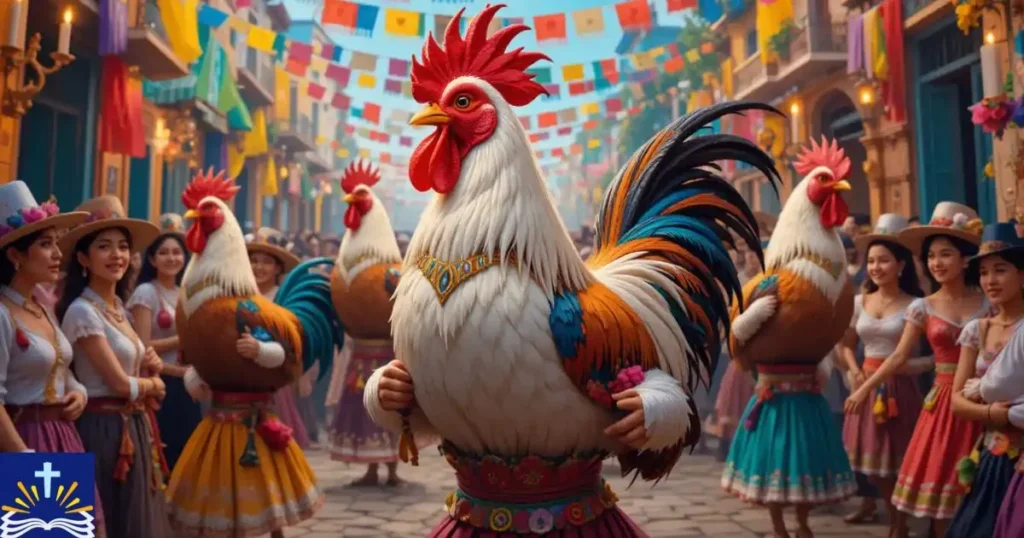
El Gallo plays an important role in festivals and cultural traditions, where it is celebrated through music, dance, and rituals. These events honor the rooster’s symbolism of vitality, strength, and renewal.
Festivals Honoring the Rooster
Many Latin American and global festivals feature El Gallo as a central figure in religious and folk celebrations. Some key events include:
- La Fiesta de San Pedro (Mexico) – Celebrates Saint Peter, often including rooster imagery.
- Chinese New Year (Year of the Rooster) – Honors the rooster’s characteristics of intelligence and bravery.
- Festa do Galo (Brazil) – A carnival event that features rooster-inspired costumes and dances.
- El Día del Gallo (Guatemala) – A cultural event celebrating El Gallo’s presence in folklore.
- French Rooster Symbolism – France recognizes the rooster as a national emblem of resistance and pride.
Rooster Symbolism in Cultural Celebrations
During these festivals, El Gallo appears in songs, artwork, and traditional dances. It is often seen as a guardian of the community, representing:
- Victory over hardships – A rooster’s crow is linked to overcoming struggles and embracing the future.
- Prosperity and good fortune – Some cultures believe roosters bring luck and blessings.
- Unity and leadership – The rooster’s presence in celebrations reinforces strength within communities.
Global Perspectives on El Gallo
The significance of El Gallo extends beyond Latin America, as roosters hold symbolic meaning in cultures worldwide.
Rooster Symbolism Worldwide

“Various regions view roosters as powerful spiritual and cultural icons.”
- China – The rooster is one of the Chinese zodiac animals, symbolizing honesty, punctuality, and good fortune.
- “In Japan, the Shinto tradition associates the rooster with the rising sun and sacred shrines.”
- “In Greece, people linked the rooster to Ares, the god of war, symbolizing bravery and protection.
- India – Roosters appear in Hindu mythology as symbols of vigilance and warrior spirit.
- France – The Gallic rooster represents national identity, strength, and resilience.
Across different cultures, El Gallo remains a timeless emblem of power, faith, and renewal, reinforcing its global cultural importance.
Conclusion
El Gallo is far more than just a rooster it is a cultural icon, a spiritual symbol, and a representation of strength and resilience across different traditions.
Whether it’s honoring bravery in Lucha Libre, symbolizing faith in religious stories, or bringing communities together in festivals, El Gallo continues to hold a special place in history and modern life. Its powerful presence in global traditions reminds us of the values it represents: courage, leadership, renewal, and unwavering spirit.
As time goes on, El Gallo’s legacy remains alive and strong, proving that this iconic figure will continue to crow proudly through generations.

Hi! I’m Ethan Matthews, a tech enthusiast and avid traveler, sharing insights and adventures from my journeys around the globe.






